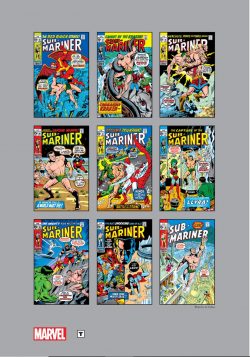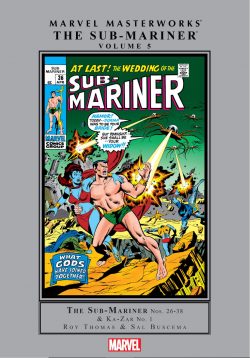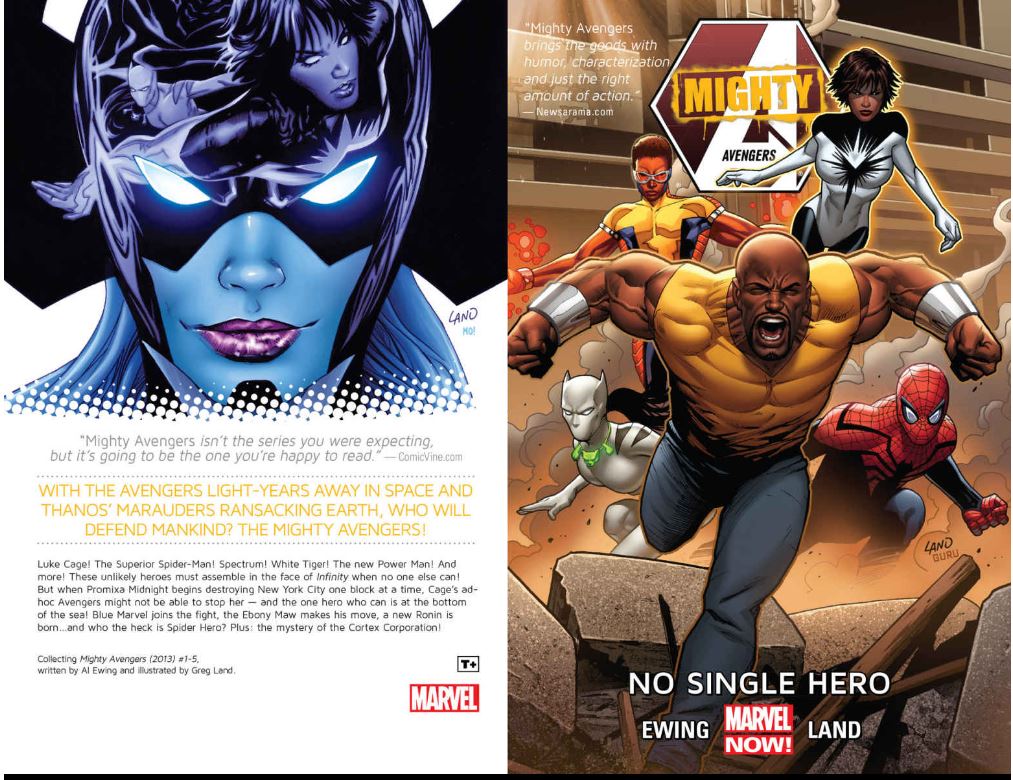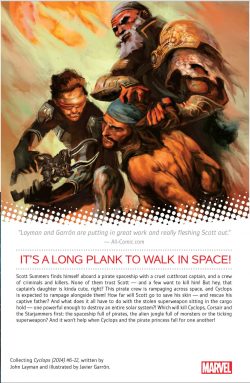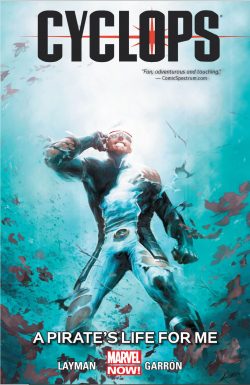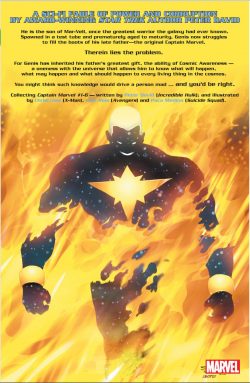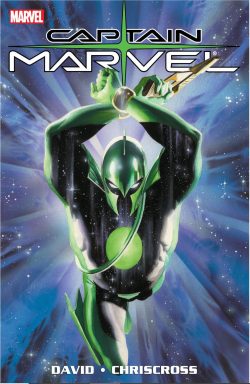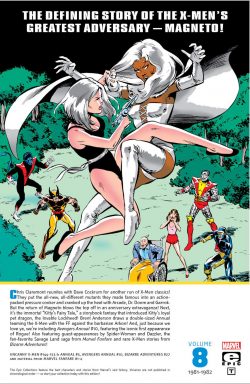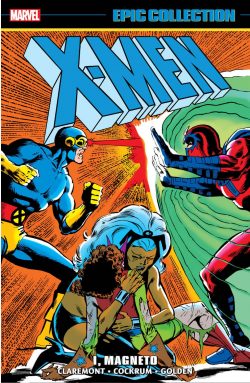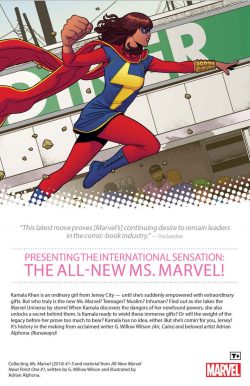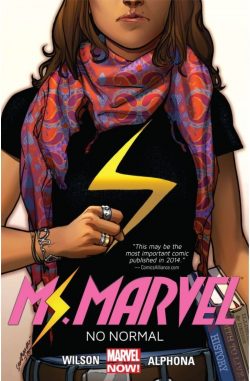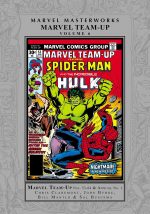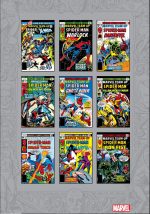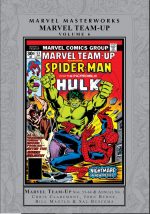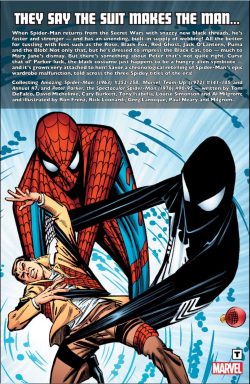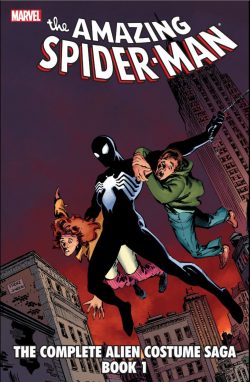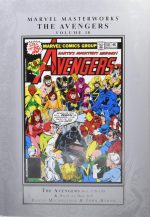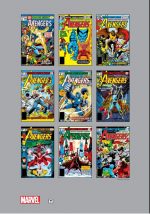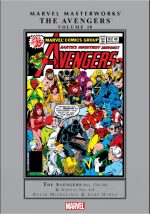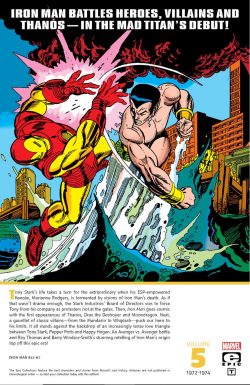
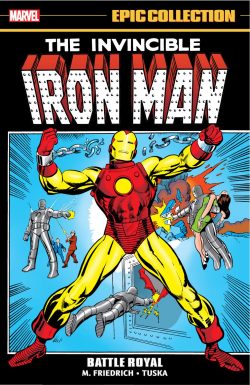
By Roy Thomas, Jim Starlin, Steve Gerber, Bill Everett, George Tuska, Barry Windsor-Smith, P. Craig Russell, John Romita & various (MARVEL)
ISBN: 978-1-3029-3361-6 (TPB/Digital edition)
Win’s Christmas Gift Recommendation: Glittering Marvel Madness… 8/10
First conceived in the wake of the Cuban Missile Crisis at a time when the economy was booming and “Commie-bashing” was an American national obsession, the emergence of a new and shining young Thomas Edison, using Yankee ingenuity, wealth and invention to safeguard the Land of the Free and better the World, seemed an obvious development. Combining the then-sacrosanct faith that technology and business in unison could solve any problem, with the universal imagery of noble knights battling evil, Tony Stark – the Invincible Iron Man – seemed an infallibly successful proposition.
Of course, whilst Tony Stark was the acceptable face of 1960s Capitalism – a glamorous millionaire industrialist/scientist and a benevolent all-conquering hero when clad in the super-scientific armour of his alter-ego – the turbulent tone of the 1970s soon relegated his suave, “can-do” image to the recycling bin of history.
With ecological disaster and social catastrophe from the myriad abuses of big business the new zeitgeists of the young, the Golden Avenger and Stark International were soon confronting a few tricky questions from the increasingly politically savvy readership.
With glamour, money and fancy gadgetry not quite so cool anymore, the questing voices of a new generation of writers began posing uncomfortable questions in the pages of a series that was once the bastion of militarised America…
This grand and gleaming chronological compendium navigates that transitional period, re-presenting Iron Man #47-67 and the period cover-dated June 1972 through April 1974, as the title experienced an unprecedented and often uncomfortable number of creative personnel changes whilst the country endured a radical and often divisive split in ideology.
It begins in the aftermath of best friend Kevin O’Brian’s pointless death and the gradual disintegration of his girlfriend Marianne Rodgers who is slowly being driven insane by her own psychic abilities.
After the funeral, Stark traumatically reviews his origins, twin careers and now-obscured objectives in ‘Why Must There be an Iron Man?’ (by Roy Thomas, Barry Windsor-Smith & Jim Mooney) after which, emotionally reinvigorated and rededicated to his life of service, the Armoured Avenger welcomes new scripter Mike Friedrich and established artists George Tuska & Vince Colletta to again face the ferocious threat of radical incendiary terrorist Firebrand in ‘The Fury and the Inferno!’
Meanwhile, whilst attempting a new start in life, Marianne’s final breakdown begins…
‘…There Lurks the Adaptoid!’ finds her experiencing horrifying precognitive visions of a power-mimicking robot attacking Iron Man, and leads to her accidental betrayal of the man she loves when the automaton actually arrives and evolves into an unbeatable new form in #50’s ‘Deathplay!’
This coincides with equally-troubled Z-list villain Princess Python attempting to kidnap Stark, just as our hero is being targeted by power-leeching sub-atomic tyrants, before the bizarre saga concludes with bombastic battle in ‘Now Stalks the Cyborg-Sinister!’
New Age mysticism and West Coast celebrity-cults informed Iron Man #52 as Stark faces ‘Raga: Son of Fire!: an emotion-fuelled, flaming maniac trained by an evil guru who subsequently takes over from his failed disciple when things get too hot…
With additional pencils from star-in-waiting Jim Starlin, concluding chapter ‘The Black Lama!’ shows that the master mage is also unable to destroy the Golden Avenger, but would subsequently return to become one of the hero’s greatest and most insidious foes of the period.
Issue #54 found Stark in California and drawn into what became one of Marvel’s earliest and most successful crossover epics. ‘Sub-Mariner: Target for Death!’ debuted pitiless alien researcher Madame MacEvil – later re-branded as Moondragon during the Thanos Saga…
She was a bald, sexy science siren who manipulated Iron Man into attacking the Prince of Atlantis in a spectacular blockbusting bout further enhanced by additional art from the legendary Bill Everett supplementing the efforts of Friedrich, Tuska & Colletta…
The Thanos story moved into full gear in Iron Man #55, as Friedrich scripted illustrator Jim Starlin’s opening gambit ‘Beware The… Blood Brothers!’: introducing haunted humanoid powerhouse Drax the Destroyer, who had been trapped by extraterrestrial invader Thanos under the Nevada desert and was in dire need of rescue…
(This was all merely a prelude to the full saga which appeared in Captain Marvel #25-33, Marvel Feature #12, Daredevil #106-107 and Avengers #125, and has been collected in many compilations…
Iron Man #56 was a literally magical palate-cleanser, as Steve Gerber joined Starlin & Mike Esposito to tell the satirically hilarious tragedy of ‘Rasputin’s Revenge!’, wherein a street corner doom-prophet accidentally gains the power to fulfil his prognostications but still falls sadly short of engineering an apocalypse…
It was back to business as usual with Gerber, Tuska, Esposito & Frank Giacoia in #57 as a devastating ‘Strike!’ hits troubled Stark Industries. The dissent has been engineered by an insidious old enemy who inevitably overplays his be-ringed hand in concluding episode ‘Mandarin and the Unicorn: Double-Death!’ (with Friedrich returning to script Gerber’s plot) after which ‘A Madness in Motown!’ sees Stark battling revenge-crazed anti-capitalist Firebrand whilst unknowingly falling for the torrid terrorist’s sister Roxie Gilbert.
Another 2-part clash follows – this time against a deadly technology-thief – opening with ‘Cry Marauder!’ after a masked malcontent steals Stark’s experimental space shuttle. Culmination comes with ‘Death Knells over Detroit!’ as the purloined prototype is aimed like a monstrous missile at the heart of Motor City, leaving a crippled Iron Man only seconds to save the day…
With Friedrich scripting, the action stays in Detroit as Stark inspects one of his factories until former Maggia assassin ‘Whiplash Returns!’ (illustrated by P. Craig Russell, Esposito, Frank Giacoia & John Romita Sr.). The crazed killer-for-hire is raging for revenge and especially ticked off that his girlfriend has been made his boss…
Illustrated by Tuska & Esposito, an extended epic began in #63 with ‘Enter: Dr. Spectrum’, seeing Stark relentlessly – and fruitlessly – romantically pursues pacifist dissident Roxie Gilbert in Detroit, whilst obnoxious Ugandan financier and diplomat Dr. Kinji Obatu visits the Long Island plant and is attacked by a gang of masked thugs…
The assault is repelled thanks to the timely assistance of stand-in Iron Man Eddie March, who is promptly offered a bodyguard job by the creepy ambassador and invited to accompany him to a meeting with Stark in Detroit.
On Stark’s arrival, photonic fiend Dr. Spectrum ambushes the inventor, before being driven off by the Armoured Avenger after a titanic and costly struggle. A far more serious problem emerges later when old friend Happy Hogan accuses Tony of having an affair with his wife Pepper…
Spectrum strikes again in the next issue, with a similar lack of success, before Happy blows his top and takes a swing at Stark, but that confrontation is curtailed when a gigantic monster kidnaps just-arrived Obatu in ‘Rokk Cometh!’
When the beast then targets Roxie, exhausted Iron Man intervenes but is too drained to resist the relentless Spectrum…
Issue #65 exposes ‘The Cutting Edge of Death!’ when the Golden Avenger learns the true parasitical nature of Spectrum’s Power Prism as it transfers itself from wilfully disobedient villain Obatu to our worn-out hero.
Its glee is short lived though, as the possessed Iron Man is challenged by recently arrived comrade Thor, resulting in a blockbusting ‘Battle Royal!’ which only ends when the Thunderer crushes the crystal conqueror and discovers the dying man inside the armour is neither Stark nor Obatu…
As a consequence of that climactic clash of myth and mechanism, IM #67 sees the impostor Iron Man temporarily mutated by Stark’s medical miracle machine the Cobalt Enervator into a rampaging monster in ‘Return of the Freak’ but no sooner do the genuine Armoured Avenger and surgeon Don Blake (who we all know was Thor back then) stop and save the berserk victim than Stark is drawn into another conflict in South East Asia…
Sadly. That falls into the category of “To Be Continued”…
With covers by Kane, Colletta, Giacoia, Tuska, Starlin, Joe Sinnott, Rich Buckler, John Romita & Mike Esposito, the galvanised wonderment also includes many beautiful original art pages and covers by Windsor-Smith, Mooney, Tuska, Everett, Colletta, Starlin, Esposito, John Romita & Kane: wrapping up this collection with the Golden Gladiator being carefully politically repositioned at a time when Marvel solidly set itself up at the vanguard of a rapidly changing America increasingly at war with itself.
With this volume Marvel further entrenched itself in the camp of the young and the restless, experiencing first hand, and every day, the social upheaval America was undergoing. This rebellious teen sensibility and increased political conscience permeated Marvel’s publications as their core audience evolved from Flower Power innocents into a generation of acutely aware activists. Future tales would increasingly bring reformed capitalist Stark into many unexpected and outrageous situations…
That’s the meat of another review, as this engrossing ride is done. From our distant vantage point the polemical energy and impact might be dissipated, but the sheer quality of the comics and the cool thrill of the eternal aspiration of man in perfect partnership with magic metal remains. These superhero sagas are amongst the most underrated but impressive tales of the period and are well worth your time, consideration and cold hard cash.

